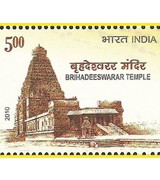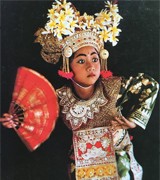COVER STORY
ART STAMPS 100 - Tanjavur - Centre of arts and culture
S. SANKARANARAYANAN

During the last 12 years and more, we have gone past 99 chapters in this series on Indian Musical Philately. They provided stimulating reading on saint-poets, vaggeyakaras, music maestros, pioneers, trendsetters and renascence makers, patrons and promoters, institutions and sabhas, Rabindra Sangeet, the National Anthem, miniature paintings on raga-raginis, theatre and thespians and multifaceted geniuses. The nine special cancellations on the Navaratri songs and the set of 11 stamps on Jayadeva’s Geeta Govinda are rare philatelic items. The full-scale stories on All India Radio and Subramania Bharati as a composer belonged to this column; but as they were exhaustive and comprehensive, they were presented as cover stories (Sruti 333 and 324) outside the series. It is time now to give the series a fitting finale. And there could be no better choice than Tanjavur, a great centre of arts and culture, symbolised by the towering Brihadeeswara Temple (also known as Peruvudaiyar Koil), built by Raja Raja Chola over a thousand years ago. It is the world’s first complete granite temple, and now a UNESCO World Heritage site.
Tanjavur is also the seat of the South Zone Cultural Centre of the Government of India. It was established in January 1986 for preservation and promotion of arts and culture of the entire southern region (Andhra Pradesh, Karnataka, Kerala, Tamil Nadu and Puducherry). For decades Tanjavur was known as the ‘Cultural Capital of the South’.
TRIBUTE
Mangalampalli Balamuralikrishna
V. RAMNARAYAN

Sangita Kalanidhi Mangalampalli Balamuralikrishna was a charismatic Carnatic vocalist of great popular appeal, with a career length that spanned seven decades. Debuting as a child prodigy in the 1940s, he was a constant presence in the concert scene of the twentieth century, and achieved elder statesman status in the new millennium.
The traditionalist found him a somewhat idiosyncratic singer, but had to concede that he had a powerful voice undiminished by age. A versatile modern composer, he was also a creator of ragas, a claim hotly contested in some quarters. Balamuralikrishna was often a controversial figure too, an innovator who questioned so-called tradition in a manner that shocked the purist. He once told Sruti that tradition was to him merely the grammar of music, the seven swaras and the laya systems.
REAR WINDOW
Nobelman at the gates
JAIDEEP VARMA

It is perhaps not hyperbolic to say that Bob Dylan’s prize for Literature is the most discussed Nobel award in its history. However much people had argued over eventual choices in the past (including bizarre ones like Obama winning the Peace prize in 2009), no one quite had the occasion to argue about the recipient’s presence in that specific category. Never had so many people appeared to care so much.
While the literary fraternity appears to be divided about the validity of this choice, there are many more who have voiced outrage this time more than ever before. Sample writer Irvin Welsh’s response, for example, that this was “an ill conceived nostalgia award wrenched from the rancid prostates of senile, gibbering hippies.” Meanwhile, fans of Murukami, DeLillo, Oates, Kundera and Roth, were dismayed, not to speak of those who supported the Syrian poet Adunis or Kenyan writer Ngugi wa Thiong’o – other favourites, if bookmakers were to be believed.
DANCE ABROAD
Balinese dance - From the sacred to the secular
RENUKA VAIDYANATHAN

When I first visited Bali, right after the bombing there of 2002, it was a much quieter place than it is today. I stayed in one of the beach resorts in peninsular Bali (in the South) and witnessed my first Balinese dance—a Legong—one evening at the resort.
As an ardent fan of Indian classical dance, I was immediately attracted to Balinese dance. I started looking for similarities with Indian dance forms and noting the differences as well. Since then, I have visited Bali innumerable times and watched several dances. I have even had the privilege of visiting a senior Balinese dancer Cok Rathi in her Denpasar home (she belongs to the erstwhile royal family of Ubud) and chatting with her about Balinese dance. I then attended her performance in Ubud and what struck me was the relatively fuss-free nature of the dancers. They are not divas; they are very accessible, however senior they may be.


